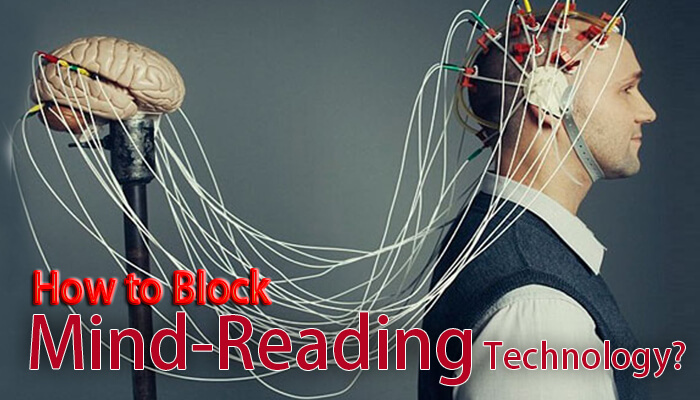In the rapidly evolving landscape of technology, the usage of Artificial Intelligence (AI) has seen a remarkable surge, transforming various industries and aspects of everyday life. Recent studies indicate an astounding annual growth rate of 37.3%, projected from 2023 to 2030, signifying AI’s immense potential and impact in the coming years.
While AI innovations have already streamlined numerous processes, today’s scientists and researchers are setting their sights on a more revolutionary breakthrough – mind-reading technology. As AI capabilities advance, the possibility of accessing and analyzing the inner workings of the human mind raises intriguing possibilities and ethical questions.
Keep reading to navigate the captivating world of mind-reading technology, unveiling its promises, challenges, and the profound impact it could have on how people perceive and interact with technology and each other.
What Is Mind-Reading Technology?

Mind-reading technology relies on brain-computer interfaces (BCIs) to facilitate communication between the brain and computers. BCIs can be invasive, involving implanting electrodes directly into the brain, or non-invasive, using external sensors to measure brain activity. Invasive BCIs offer higher precision but come with more significant risks, while non-invasive methods are safer but may have lower resolution.
Neural imaging plays a crucial role in mind-reading technology. Techniques like functional magnetic resonance imaging (fMRI) and electroencephalography (EEG) are used to monitor brain activity. Real-time brainwave analysis allows the interpretation of specific brain patterns associated with different thoughts or actions.
Recent advancements in mind-reading technology have shown remarkable progress. Scientists have developed neural decoding algorithms that reconstruct images, videos, and text from brain activity data. This enables the translation of thoughts into visual representations or text without spoken or written communication. Such breakthroughs hold great potential for medical applications, like assisting patients with paralysis or enabling communication for individuals with speech impairments.
Potential Risks of Mind-Reading Technology

With every rise of new technology comes an array of potential risks and ethical issues. As mind-reading technology continues to make strides, the possibility of its misuse raises serious concerns. Below are some potential risks that must be addressed:
- Invasion of Privacy: The advent of wireless mind-reading technology raises significant concerns about the invasion of individuals’ privacy. As this technology progresses, there is a potential for unauthorized access to private thoughts and emotions, leading to a breach of personal boundaries. The ability to clandestinely read one’s innermost feelings without consent could have far-reaching consequences, undermining the fundamental right to mental privacy.
- Ethical Dilemmas: Mind-reading technology presents a myriad of ethical dilemmas in various domains. In law enforcement, the use of mind-reading devices to extract information or gauge intentions could raise questions about coercion and the violation of civil liberties. Similarly, in advertising and marketing, the ability to discern consumers’ thoughts may lead to manipulative practices, compromising autonomy and free will. Striking a balance between the potential benefits and the moral implications of mind-reading technology remains a complex challenge.
- Security Vulnerabilities: The integration of mind-reading technology introduces serious security vulnerabilities. Unauthorized access to sensitive brain data could result in identity theft, blackmail, or the manipulation of individuals through their thoughts and emotions. Ensuring robust encryption and secure data storage is imperative to safeguard against potential cyber-attacks or illegal mind-reading that may exploit the technology’s capabilities. Establishing stringent regulations and ethical guidelines is essential to prevent the misuse of mind-reading devices and protect individuals from potential harm to their mental privacy.
How To Block Mind-Reading Technology

There are ways to protect yourself from mind-reading technology if you feel uncomfortable with its presence. The following are steps that you can take to reduce the risk of having your thoughts read:
- Privacy Measures: To safeguard against mind-reading technology, individuals can employ various privacy measures. Utilizing brainwave-blocking headwear, such as Faraday helmets, can shield brain signals from external scanning. Encryption tools designed for neural data can add an extra layer of protection to brain-computer interfaces, ensuring secure communication. Additionally, mindfulness techniques and meditation can help individuals maintain focus, making it harder for potential mind readers to access scattered thoughts. Being cautious about sharing personal information and employing physical barriers against unauthorized access are crucial privacy measures to safeguard against potential intrusions into one’s mind.
- Legal and Regulatory Frameworks: In the face of advancing mind-reading technology, robust legal and regulatory frameworks play a vital role in protecting individual’s rights and privacy. Governments and policymakers must establish clear guidelines and laws to govern the development, deployment, and use of mind-reading devices. These frameworks should address issues of consent, data ownership, and the potential misuse of brain data. Strict enforcement and penalties for illegal mind reading and unauthorized access to neural information are essential to deter unethical practices. By establishing a comprehensive legal framework, society can ensure that mind-reading technology respects individual rights and adheres to ethical principles.
Mind-reading technology represents a groundbreaking frontier with promising advancements that could revolutionize various aspects of life. While embracing its potential benefits, individuals must remain vigilant about the ethical implications and privacy concerns involved. As this technology continues to evolve, fostering a responsible and conscientious approach will be crucial in harnessing its power for the greater good while respecting the sanctity of individual thoughts and privacy. So, the next time you consider using mind-reading technology, remember to take the necessary steps to protect yourself from potential risks. With these safeguards in place, you can rest assured that your thoughts and emotions will remain safe and secure.






